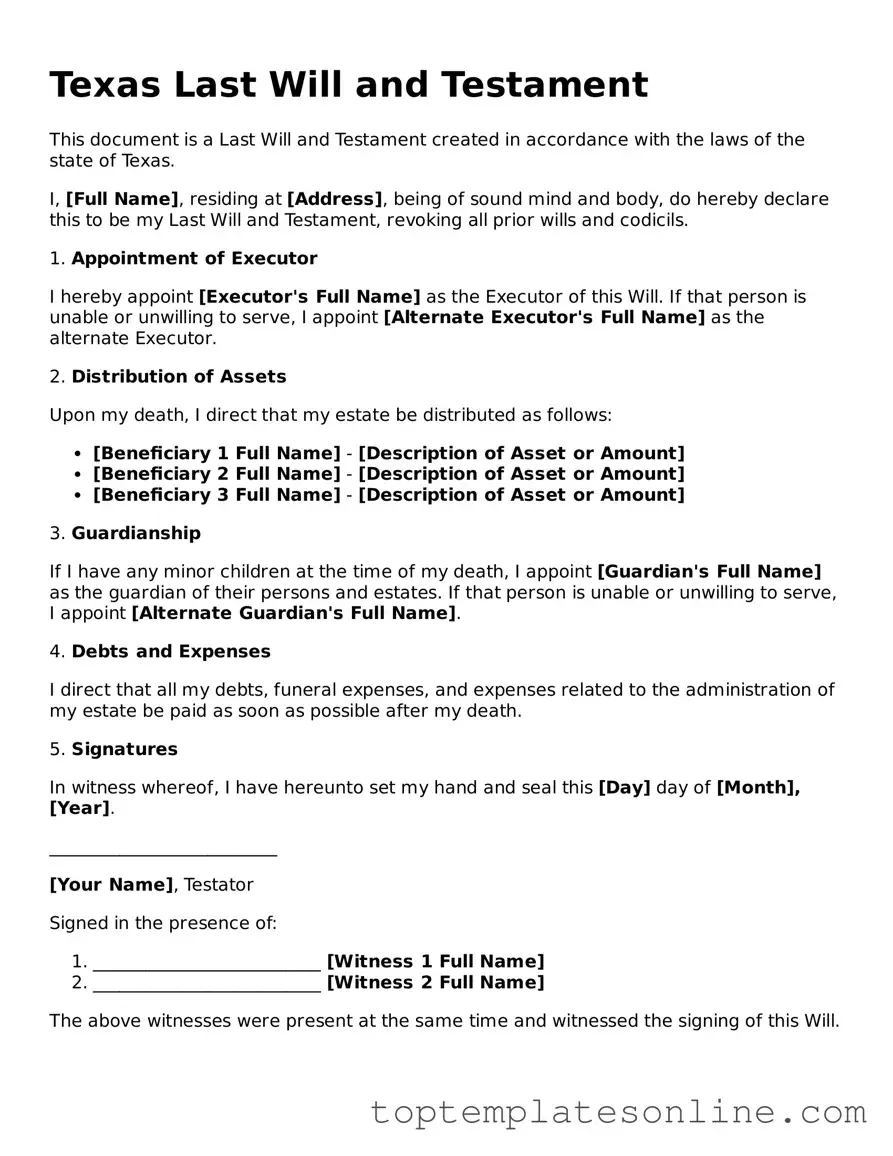Blank Last Will and Testament Template for Texas State
A Texas Last Will and Testament form is a legal document that outlines how a person's assets and affairs should be handled after their death. This form ensures that your wishes are honored, providing clarity and direction for your loved ones during a difficult time. Understanding its components and requirements is essential for anyone looking to secure their legacy in the Lone Star State.
Customize Last Will and Testament Here
